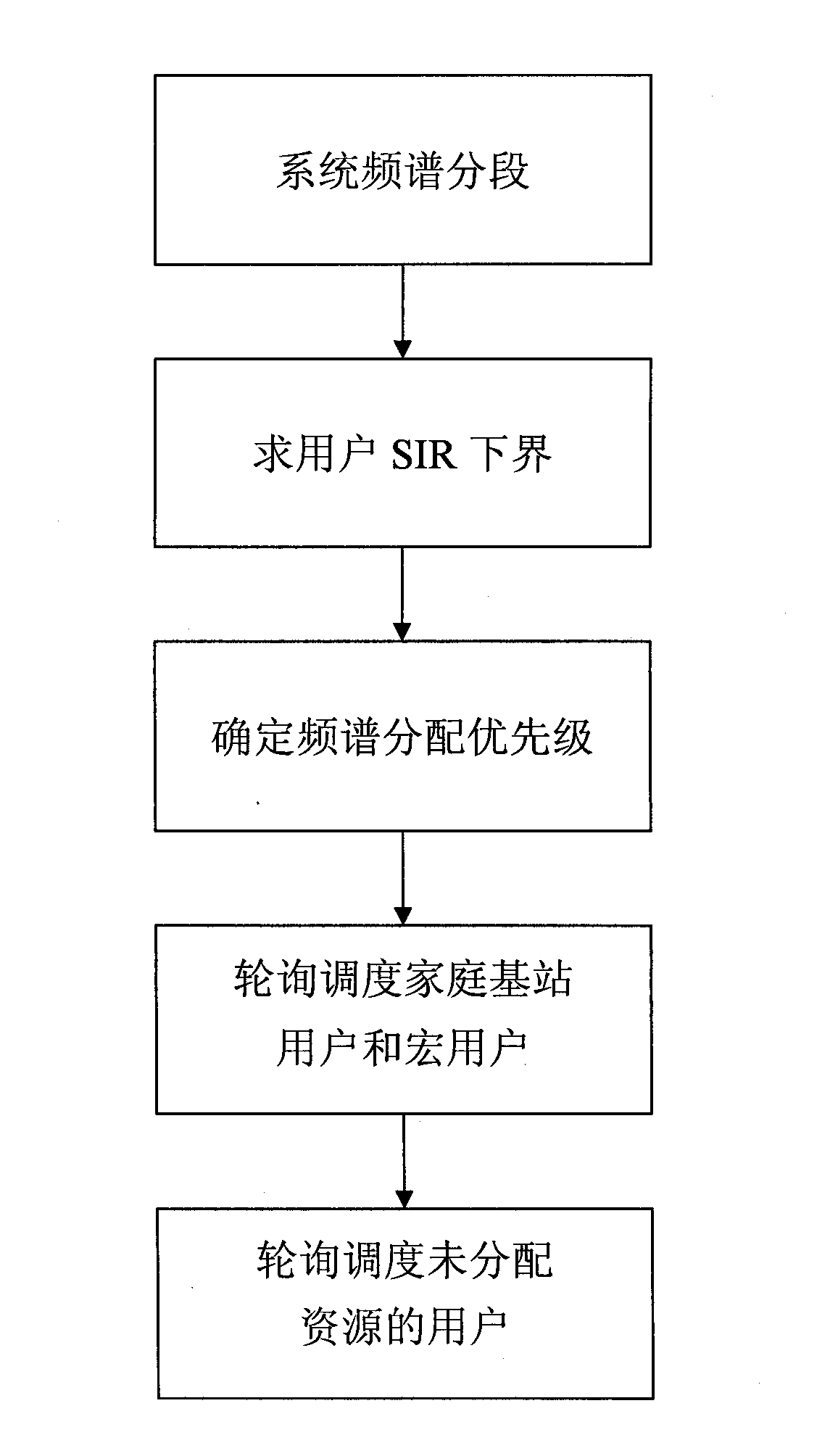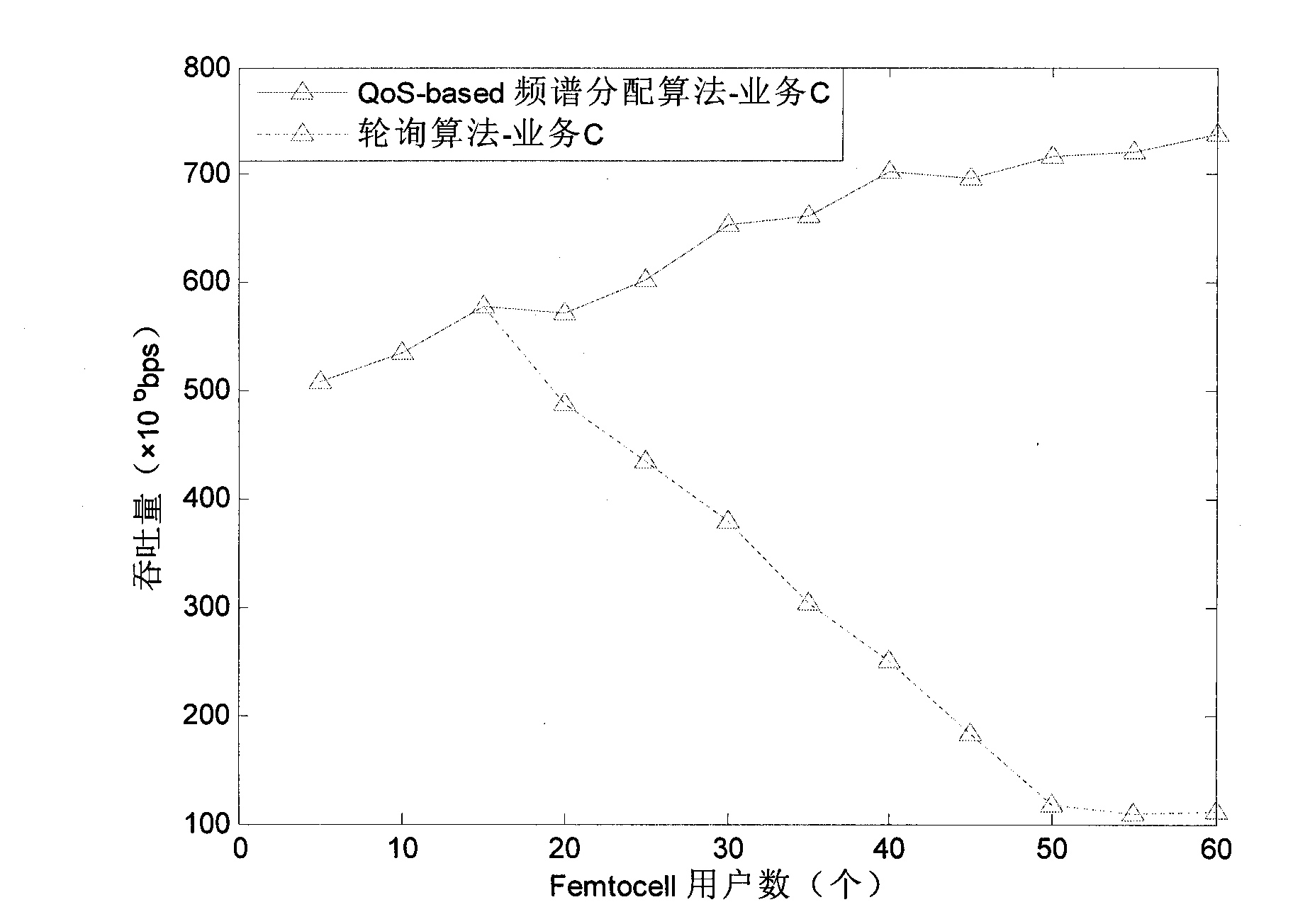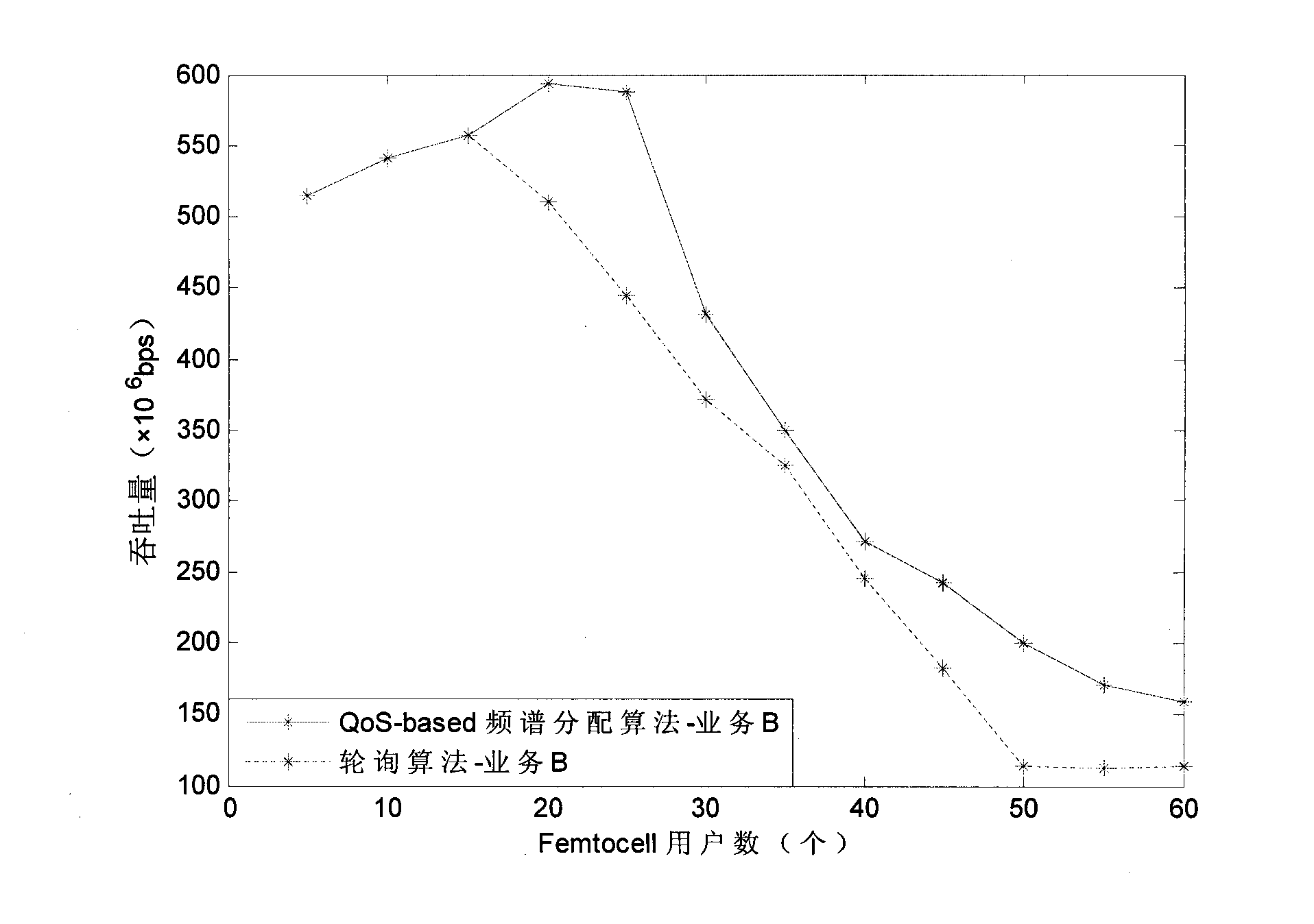Service quality-based resource round-robin scheduling method
A resource scheduling and quality of service technology, applied in the field of polling resource scheduling, can solve problems such as unreasonable resource allocation, affecting data transmission efficiency, and low data transmission rate, so as to improve system throughput, resource utilization, and system The effect of capacity
- Summary
- Abstract
- Description
- Claims
- Application Information
AI Technical Summary
Problems solved by technology
Method used
Image
Examples
Embodiment Construction
[0029] Combine figure 1 The implementation steps of the present invention will be further described.
[0030] Step 1: System spectrum segmentation
[0031] The macro base station divides the entire system frequency band into dedicated frequency bands for home base stations, dedicated frequency bands for macro cells, and frequency bands shared by home base stations and macro cells.
[0032] The macro base station calculates the frequency band division length according to the number of users in the macro cell and the home base station cell. The length of the dedicated frequency band for the macro cell is: 2ca / 3 (a+b); the length of the dedicated frequency band for the home base station cell is: 2cb / 3 (a+b); the length of the shared frequency band is: 1c / 3. Where c is the total frequency band length, a is the number of users in the macro cell, and b is the number of users in the home base station cell.
[0033] After the frequency band of the entire system is divided into three frequen...
PUM
 Login to View More
Login to View More Abstract
Description
Claims
Application Information
 Login to View More
Login to View More - R&D
- Intellectual Property
- Life Sciences
- Materials
- Tech Scout
- Unparalleled Data Quality
- Higher Quality Content
- 60% Fewer Hallucinations
Browse by: Latest US Patents, China's latest patents, Technical Efficacy Thesaurus, Application Domain, Technology Topic, Popular Technical Reports.
© 2025 PatSnap. All rights reserved.Legal|Privacy policy|Modern Slavery Act Transparency Statement|Sitemap|About US| Contact US: help@patsnap.com



